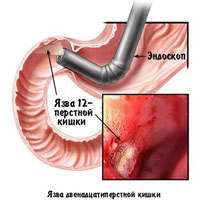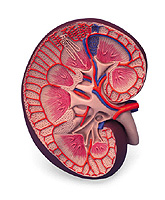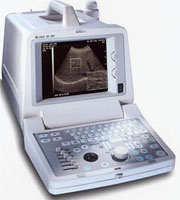The damage to the digestive system is found in virtually any form of amyloidosis and is one of the many localization of the process. The symptoms of amyloidosis depend on the organ, which was defeated. Treatment is aimed at combating the main disease, the use of specific and symptomatic therapy.
Content
Amilidosis is a systemic disease with damage to many organs and various tissue structures, characterized by a violation of protein metabolism and extracellular deposits of a complex protein-polysaccharide complex in them.
Symloidosis symptoms of the gastrointestinal tract
 The defeat of the digestive system is found with any form of amyloidosis, especially some of its departments (language - macrogloss, intestines, liver). In most cases, the defeat of the digestive system represents only one of the many local locations (at the same time there is amyloidosis of the kidneys, skin, skeletal muscles, nervous system and other organs and tissues).
The defeat of the digestive system is found with any form of amyloidosis, especially some of its departments (language - macrogloss, intestines, liver). In most cases, the defeat of the digestive system represents only one of the many local locations (at the same time there is amyloidosis of the kidneys, skin, skeletal muscles, nervous system and other organs and tissues).
When the amyloidosis of the esophagus is characterized by dysphagia (violation of swallowing) when swallowing dense and dry food, especially when it is lying, the appearance of belching. When X-ray examination, the esophagus is hypotonic, the peristalsis is weakened, when studying the patient in the horizontal position, the barium suspension is long delayed in the esophagus. Complications: amyloid ozles of esophagus and esophageal bleeding.
The amyloidosis of the stomach is usually combined with the amyloidosis of the intestine and other organs. Manifestations of amyloidosis of the stomach:
- feeling of gravity in the epigastric area after eating
- Dyspeptic disorders
- With a x-ray study - smoothness of the folds of the mucous membrane, the weakening of the peristalsis and evacuation of the contents of the stomach
Complications of the disease are amyloid stomach ulcers, gastric bleeding, punching of ulcers. Differential diagnosis is carried out with chronic gastritis, ulcerative stomach disease, less often - tumor. Biopsy data (detection of amyloidosis) have crucial importance.
Intestinal amyloidosis - frequent localization of this disease. It is manifested by a feeling of discomfort, gravity, less often with stupid or spastic abdominal pains, stool impairments - constipation or persistent diarrhea.
In the study of the feces, a pronounced steamer, amylorore, creature - substances that are in the norm are absorbed in the intestine. The blood is observed anemia, leukocytosis (increasing the number of leukocyto), an increase in ESP, hypoproteinemia (decrease in protein concentration), hyponatremia (decrease in sodium concentration), hypocalcemia (decrease in calcium concentration).
Special research methods detect a violation of trim digestion and suction in the intestine. With a x-ray study, the exploration is characterized («Binding») intestinal hinges, thickening of folds and smoothness of the relief of the mucous membrane, slowing down or accelerating the passage of the barium suspension by intestine.
The biopsy of the mucous membrane of a thin and colon confirms the diagnosis and allows for differential diagnosis with enteritis and colitis, especially with non-specific ulcerative colitis. The isolated tumor-shaped amyloidosis of the intestine proceeds under the mask of the tumor (pain, intestinal obstruction) and is usually detected on the operating table. Complication - severe hypoproteinemia due to disruption of suction processes in the intestines, polyhypovitaminosis, narrowing of intestinal lumen, amyloid ulcers, intestinal bleeding, perforations.
Liver amyloidosis occurs relatively often. The increase and sealing of the liver is characteristic, when palpation the edge is flat, painless. It is often developing ascites - accumulation of fluid in the abdominal cavity. Less often occur pain in the right hypochondrium, dyspeptic phenomena, splenomegaly, jaundice, hemorrhagic syndrome.
Laboratory studies determine the change in protein-sediment samples, hypercholesterolemia (increasing blood cholesterol levels), in some cases - hyperbiller-binemia (increase in bilirubin level), increasing the activity of alkaline phosphatase, aminotransferase (alt, asate) of blood serum, positive trial with bromsulphane. Crucial liver biopsy has crucial importance. Complications - liver failure.
The amyloidosis of the pancreas is rarely diagnosed (proceeds under the mask of chronic pancreatitis). For the disease, stupid pain in the left hypochondrium, dyspeptic phenomena, pancreatogenic diagrams, steatheree. Duodenal content research reveals excessive pancreas deficiency. In severe cases, secondary sugar diabetes.
Diagnosis of amyloidosis of the digestive system organs. Of great importance is the identification of the defeat of other organs and systems - kidneys, heart, leather, spleen. The most reliable method for the diagnosis of amyloidosis is the biopsy of organs, in punctures, which are detected by amyloid boulders when coloring sections of Congo red, methylene or gentinean violet. In the secondary form of this disease, the detection of a chronic disease is important, which is usually complicated by amyloidosis (tuberculosis, bronchiectatic disease, Plevura empya and T. D.).
Functional clinical samples are also used: with the Congo red and methylene blue (the rapid disappearance of paints with intravenous administration from the serum due to the fixation of the amyloid and a sharp decrease in the selection of their kidneys with urine). However, with primary amyloidosis, they give a non-permanent result. The diagnosis of primary amyloidosis is based on a thorough genetic analysis (detection of amyloidosis in relatives).
Laboratory testing of blood detect the increase in ESP, increasing blood cholesterol and blood lipids. However, these changes are nonspecified for amyloidosis. The course of the disease is progressive. As the disease progresses, patients receive disability. Forecast for amyloidosis unfavorable. The death of patients comes from exhaustion, renal, heart failure.
Treatment of amyloidosis of the digestive system
With secondary amyloidosis, first of all, the treatment of the underlying disease is needed (tuberculosis, osteomyelitis, chronic emmps of pleura, etc.) After cure, which often disappears and amyloidosis symptoms. Immununopressants, corticosteroids are used from specific agents for amyloidosis. In case of early treatment, the reverse development of amyloidosis.
Symptomatic therapy is aimed at the reception of polyvitamins (intravenous or intramuscularly), diuretic agents (with severe edema), plasma transfusions. With liver failure - the corresponding symptomatic therapy. In the intestinal amyloidosis flowing with persistent diarrhea, binders (bismuth nitrate main, adsorbents). With isolated tumor-shaped amyloidosis of the gastrointestinal tract - surgical treatment.








